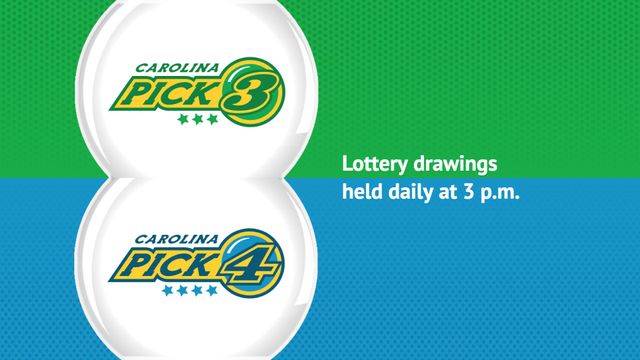Fact check: McCrory overstates 3rd grade test ramifications
Former North Carolina Gov. Pat McCrory is sounding the alarm about how remote learning may affect students long-term.
McCrory, who’s running for U.S. Senate, talked about third-grade reading scores on his podcast on May 4.
“The latest statistics coming out of North Carolina is the following,” McCrory said.
“75% of third-graders in this year’s class are not reading at a third grade level,” he said. “And guess what? If you’re not reading at a third grade level by the time you get out of third grade, there’s probably an 80% chance that you will not graduate.”
Is it true that 75% of North Carolina’s third-graders aren’t reading at grade-level? And is it true that there’s an 80% chance those kids won’t graduate high school?
McCrory’s first claim has factual basis but needs context. As to the second part about graduation, it appears McCrory mischaracterized a different stat about high school dropouts. Researchers have found a link between third-grade reading and high school success — but McCrory’s statistic is way off.
North Carolina students
McCrory said “75% of third-graders in this year’s class are not reading at a third grade level.” This claim isn’t entirely wrong, but it lacks essential context.
According to data presented Feb. 9, 75% of third-grade students who’d taken the beginning-of-grade test were not reading at the third-grade reading level. The News & Observer wrote about the data when it was released.
McCrory’s listeners could get the impression that 75% of students are on the verge of finishing third-grade without hitting their reading comprehension goal. McCrory’s podcast aired in May, and many districts plan to end their school year in June.
Officials with the state Department of Public Instruction (DPI) say it’s important to remember that the test is given to students who haven’t completed the third grade yet. And it’s usually used as a benchmark to see what kind of growth takes place over the course of the school year.
Students typically take the beginning-of-grade (or BOG) test in August or September, around the start of the new school year. Due to the unique challenges of the 2020-2021 school year, school districts were allowed to administer these beginning-of-year tests as late as March 12.
The pandemic disrupted the school year and districts returned to in-person learning at different times. So it’s not clear exactly how much later the tests were taken, said Mary Lee Gibson, a DPI spokeswoman.
“The data of when most tests were administered is not readily available since it was an on-going testing period as students return to school,” Gibson said. Still, she said the test should not be characterized as a “midyear assessment.”
While McCrory cast this year’s test scores as a cause of remote learning, it’s helpful to note that the scores aren’t far off from last year’s beginning-of-year results, DPI spokesman Todd Silberman said.
“There was some shifting across the academic achievement levels, but the total proficient/not proficient was fairly close to the previous year,” Silberman said. “The percentage of students scoring at level 1 and level 2 (not proficient) on the BOG in at the start of the 2019-20 school year was 73.6%.”
Students tend to fare better by the end of the year. The 2018-2019 was the most recent school year not affected by the COVID pandemic. That year, the number of non-proficient readers dropped from 72% at the beginning of the year to 43% at the end of the school year.
Additionally, DPI officials say it’s also important to remember that reading comprehension is not the sole determiner of whether a student will progress to the next grade level.
“The Beginning of Grade test is used as a benchmark for where students enter third grade after summer to compare with the End of Grade assessment, showing students’ progress over the year,” Gibson said.
Predicting high school success
Now to the second part of McCrory’s claim. He said that if students aren’t reading at grade-level by the end of the third grade, “there’s probably an 80% chance that you will not graduate.”
Experts say third-grade reading comprehension levels can be a strong indicator of success in high school. However, we couldn’t find the source for McCrory’s “80%” claim.
Campaign spokesman Jordan Shaw said McCrory was referring to a statistic mentioned in a recent EdNC blog by Mary Ann Wolf, president and executive director of the Public School Forum of North Carolina.
Wolf said “88% of students who drop out of high school were not reading on grade level in third grade,” citing a 2010 study by the Annie E. Casey Foundation. That’s not the same thing as what McCrory said. Wolf’s stat is about reading comprehension scores among drop-outs, while McCrory’s stat is about predicting high school success.
The Casey Foundation actually addresses the issue at-hand in its 2012 book, “Double Jeopardy: How Third Grade Reading Skills and Poverty Influence High School Graduation.” The foundation’s webpage for book says “about 16% of children who are not reading proficiently by the end of third grade do not graduate from high school on time.”
The Casey Foundation study research is considered credible and is cited frequently, said Megan Walcek, senior communications manager for GreatSchools.org. It “has been cited over 1,000 times, which is a good indicator that the academic community finds it reliable,” she said.
The U.S. Department of Education’s Regional Educational Laboratory Program in 2018 cited the Casey Foundation’s book, saying “One in six children who are not reading proficiently in third grade do not graduate from high school on time.”
To be sure we hadn’t overlooked another significant study on the issue, PolitiFact NC reached out to multiple experts — including N.C. State University’s College of Education — about high school graduation odds for students who finish third grade without reading at grade-level. None of them had heard of a drop-out rate at the level McCrory described.
“80% sounds high to me,” said Dennis Davis, associate professor of literacy education at N.C. State University.
“I would be cautious about any claim that says there’s ‘probably’ an 80% chance you will not graduate,” said Fran Abrams, chief executive of the Education Media Centre, a research group based in London.
Our ruling

McCrory said “75% of third-graders in this year’s class are not reading at a third grade level,” adding, “If you’re not reading at a third grade level by the time you get out of third grade, there’s probably an 80% chance that you will not graduate.”
The first part of his claim has factual basis but ignores that the source of his data is the beginning-of-grade test. The second part of McCrory’s claim, meanwhile, is way off. Research has found that 16% of children who are not reading proficiently by the end of third grade do not graduate from high school on time.
The statement is partially accurate but leaves out important details or takes things out of context. We rate it Half True.














